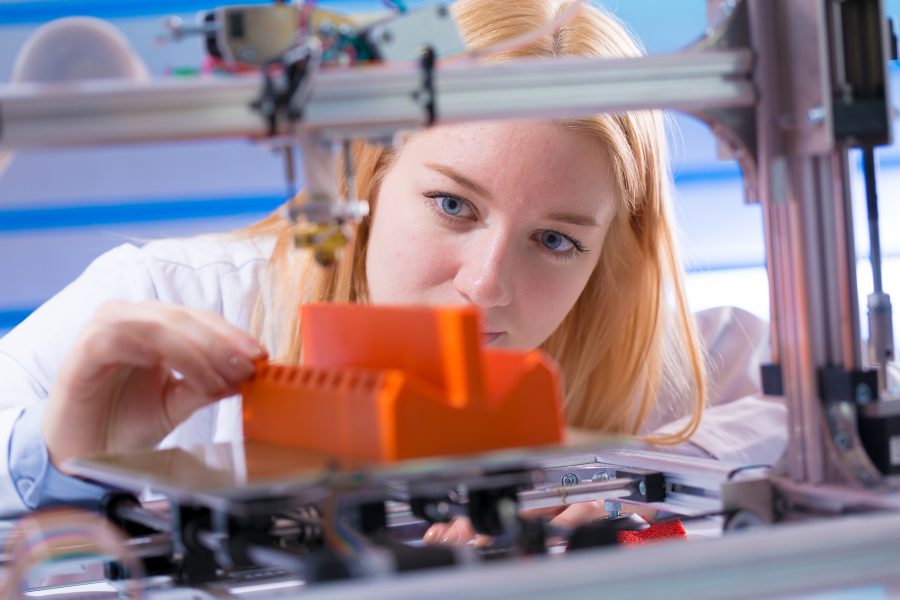Posts by Sophie Hartzler
Made in China: How Chinese Factories Became the World’s Factories
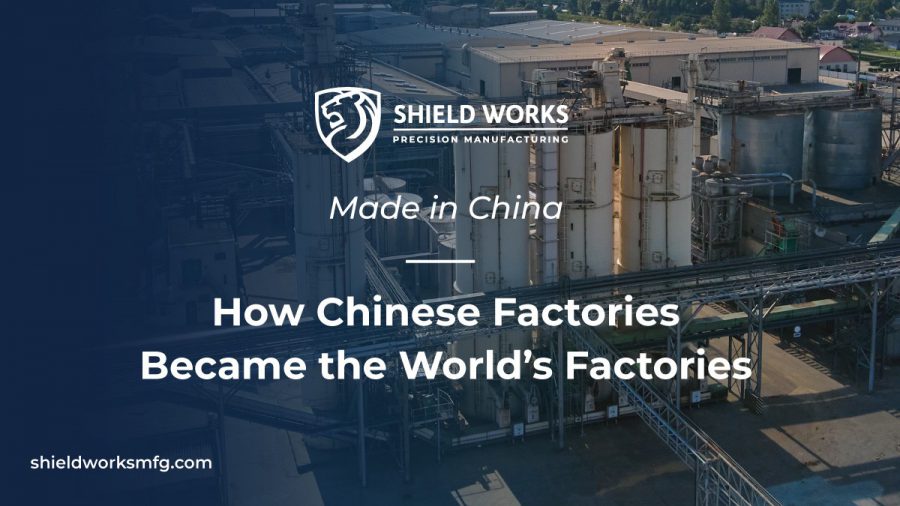
Chinese trade has expanded at a breakneck pace over the last several decades. In 2018, China exported a whopping $2.49 trillion in goods. The value of China’s exports always surpasses their annual import cost. This makes them a powerhouse of manufacturing and industry. Chinese factories were not always positioned like this, though, and it took a lot of growth to get there. So how did that all change?
We’re going to break down how product assembly in China got to where it is today and why it is still leagues beyond anyone else in the world. Stay till the end to see where they aim to go from here.
The History of Chinese Factories
During the period from 1992 to 2002, China implemented a series of incentives that were very attractive to foreign companies and investors. This alone had a massive impact on the growth of China’s manufacturing sector.
The term “made in China” was first coined in the early 1940s and this was because of a boycott of Japan and foreign-made products. China’s economy lacked the structure for efficient industrialization and they wanted to change that.
Chinese citizens wanted more opportunities to grow domestically. Boycotting these foreign-made products gave them an opportunity to take part in what they dubbed the National Salvation Effort.
What Was the National Salvation Effort?
This was a movement that opposed the Nationalist Government and demanded a stronger resistance to the expansion of Japan. As a whole, the National Salvation Movement was a coalition of leftist groups, albeit a loose group.
It included members of the Chinese Communist Party, including those who were both open and secret participants.
Why is this relevant? It was a crucial step in positioning China as a powerhouse, and not just in the manufacturing sector.
China Is the Factory of the World
Cheap and plentiful labor primarily aided in China’s rise as the ‘world’s factory.’ Besides this, an abundance of raw resources and low environmental regulations made it easy for them to grow. And, lest we forget, China’s extensive workforce is only matched by the quantity of land at their disposal.
If we’re talking about labor, we must acknowledge that in 1980, the average Chinese annual salary was between $416 to $508. On the other side of the world, the average American was earning 40-50 times that amount.
This salary discrepancy was one of the biggest draws for global corporations, as it meant higher profit margins. Additionally, China’s proximity to the Four Asian Tigers made it easy for global industries to transition.
Economic Reform
China began a series of market reforms in the late 1970s that established the real groundwork for change.
Because of rural land reforms, farmers benefitted more from their produce, which allowed more people to seek work in major cities.
In order to entice foreign investors, the Communist Party began establishing special economic zones. These zones had market-friendly policies that massively benefitted businesses and traders.
With this reform came significant growth, and today, China has several of these manufacturing hubs. Each one specializes in various parts of the supply chain.
For example, Guangdong focuses on electronics. The eastern provinces near Shanghai specialize in daily goods, mechanical parts, and medical equipment. The cities of Wuhan and Chongqing are known for their production of chemical products and auto components.
Why China Is Still Considered the World’s Factory
China has two major advantages as a manufacturing power, both of which have been demonstrated in the last year. To start, China’s industrial foundation is unrivaled in terms of range and depth.
With the capacity to produce anything from low-cost footwear to high-end biotech, China’s grip on the supply chain is unmatched.
China’s combination of manufacturing hubs, improved factories, and first-class infrastructure has made them even more competitive. This is true despite recent wage growth.
The Top Contributing Factors
Despite a change in international trade policies, China still holds most of the world’s manufacturing power. This is largely due to a few, consistent factors.
China’s Business Ecosystem
Industrial production doesn’t occur in a vacuum. It’s supported by a network of suppliers and distributors, as well as component manufacturers, government agencies, and customers.
Through competition and collaboration, these groups all become involved in the manufacturing process.
China’s business ecosystem has evolved dramatically in the last 30 years and there are a few noteworthy changes that stand out.
First, some areas have remained hubs for production. Shenzhen is an example, as it produces a substantial number of goods for the electronics industry. Overall, this domination of the market makes it difficult for anyone outside of these hubs to stand out.
Second, China boasts a technical workforce that surpasses any other. They also have a chain of assembly providers that seem to exceed the bounds of human capacity, making them the powerhouse we know today.
Taxes and Tariffs
Another significant factor was the export tax rebate China introduced in 1985. They set this into motion to boost the competitiveness of its exports. It effectively abolished double taxation on exported goods.
Additionally, any customer-based products were exempt from import taxes if they were coming from China. These lower tax rates helped keep production costs low and attracted businesses eager to make low-cost items.
Currency and Wages
Despite the US’s concerns that China manipulates its currency for national gain, the weaker yuan does make Chinese exports more competitive. Or rather, they become cheaper to buy with other foreign currencies.
Predominantly, it is a win for consumers all over the world, as Chinese products become significantly cheaper because of this.
And, if we’re talking about money, we can’t disregard the impact that China’s law of supply and demand plays on its worker wages.
Because the supply of Chinese factory workers exceeds the demand for work, salaries remain low. Furthermore, until the late twentieth century, most of the Chinese population were considered rural or ‘lower to middle class.’
Internal migration reversed the countries’ skewed rural-urban distribution. As the rise of industrial cities made more work available, there was a natural pull towards urban living and development.
A Working Example
Let’s have a look at how the supply of face masks gave us a particular illustration of China’s strength. In 2020, at the start of February, it made about half the world’s supply of masks, around 10 million a day. Within a month of that, output increased to nearly 120 million.
It would become excessively costly if every country were to develop its own production capacity to match rising demand. Most countries simply do not have the infrastructure and resources.
China still does manufacture a bulk of the face masks required for the pandemic. Any country hoping to make its own masks needs companies with expertise in textiles, chemicals, metallurgy, and machining.
They also need a good, consistent supply of raw materials, adequate manufacturing space, and qualified personal. Never mind the money required to keep it all running smoothly. Because of this, it’s impossible to start from scratch, which is why China had such a good head start.
All those things we’ve just mentioned? We know they were already in place. The cogs of China’s manufacturing machine were already well oiled and geared up to take on the load.
How Does China Want to Grow From Here?
So, while we know China is equipped to handle anything thrown at them from a manufacturing standpoint, where do they want to go from here?
Based on everything we’ve seen, China aims to move into more advanced lines of production. The industries they’ve pioneered till now have simply been a springboard.
As education and salaries grow, as they should do, that initial cost advantage shrinks. The aim for China now is to focus on domestic consumption and leave the chore of mass-producing, cheap, and labor-intensive items to others.
This gives them the space to focus on their own citizens. There has always been an aim to grow socially and economically but they intend to do this while maintaining a hold on their manufacturing.
On pure scale alone, China remains unopposed. We’re likely to see a massive change in time, but China’s manufacturing power is likely to remain unchecked.
There is a considerable new focus on technology and automation in particular. With the promise of robotics and AI, there is room for people to concentrate on more skilled pursuits.
Automation will revolutionize the way we make goods, even if we’re not quite there yet.
Quality Contract Manufacturing in China
As an OEM manufacturer in Chinese factories, we have the knowledge and expertise to offer exceptional service and goods delivery. We know how the system works, and we are proud of the last 16 years of service we’ve conducted in China.
We value quality, innovation, integrity, and excellence in all things, and aim to always offer the same to you.
Contact us today to see how we can help you with your OEM manufacturing, fulfillment, and precision assembly needs.
Which Industries Benefit the Most From Product Assembly in China?
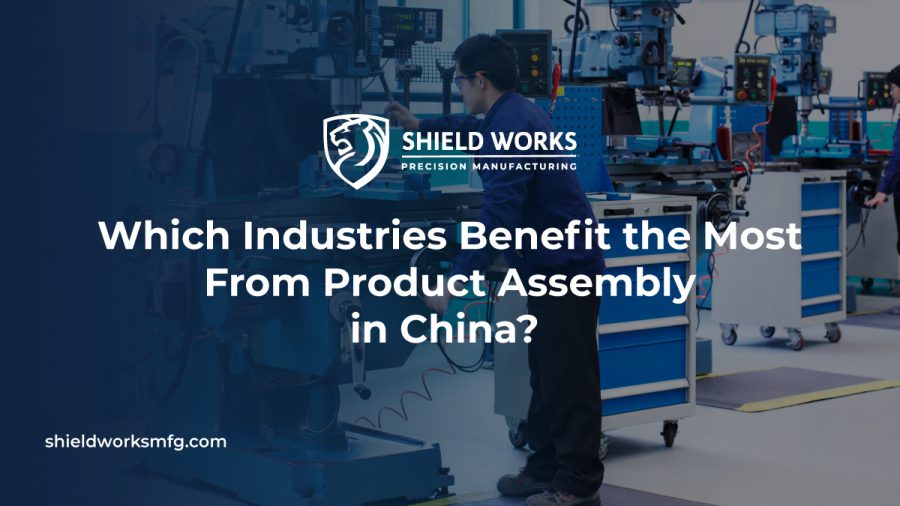
Globally, companies realize the benefits of manufacturing their goods in China. However, you might wonder which industries benefit the most from product assembly there.
Today, we’ll take a look at the industries that benefit from manufacturing in this nation. Keep reading to learn more about which industries benefit the most from product assembly in China.
China and the Global Marketplace
Around the world, there’s a wealth of goods that were made in partnership with a China assembly service. Some companies manufacture their goods in China because of the abundance of affordable employees.
Also, China’s ecosystem of suppliers, component manufacturers, and distributors has evolved. Now, the nation is a more cost-effective and efficient place to manufacture many products.
Years ago, many individuals migrated to China seeking work. Now, the labor pool in China enables the region to produce goods cost-effectively and in bulk.
Furthermore, China factories can meet any seasonal industry requirements. They can even help your company to meet unexpected fulfillment needs for sudden rises in demand.
Doing Business in China
Manufacturers in China don’t operate in a silo. Instead, they rely on a network of competent business partners. These partners include:
• Clients
• Component manufacturers
• Distributors
• Government agencies
• Suppliers
Together, these partners facilitate efficient production through competition and cooperation. In fact, the business ecosystem for product assembly services in China has evolved considerably over the last three decades.
Big Players in Product Assembly in China
Shenzhen borders Southeast Hong Kong. The area has become a hub for the electronics industry.
It’s cultivated an effective ecosystem for meeting companies’ manufacturing and supply chain needs. This ecosystem includes component manufacturers.
Also, the area’s factories employ affordable workers. However, part of the local workforce also consists of a highly skilled technical workforce.
Area manufacturers also partner with assembly suppliers. Moreover, they work closely with their clients.
Some of the most well-known and biggest brands in the world have realized the advantage of manufacturing and product assembly in China. For example, Apple Inc. leverages China’s supply chain efficiency. The partnership helps to keep the company’s costs low and its profit margins high.
FoxConn Technology Group is another major company that operates in China. It works with several suppliers and manufacturers of components in the area.
In fact, several industries rely heavily on OEM manufacturing in China.
Industries That Rely on Product Assembly in China
The global economy is expanding. Simultaneously, companies are struggling to meet the increasing demands of consumers.
As a result, a growing number of companies around the world are outsourcing manufacturing and product assembly to China. By doing so, these companies can afford to produce more products. More importantly, they can keep pace with rising consumer demand.
Still, there are some industries, in particular, that benefit from partnering with China. Let’s have a look at them.
Electronics
Electronics are one of the top goods exported with the help of manufacturing in China. In the United States, for instance, consumers are passionate about electronics.
The citizens of China represent only about 40% of end-users of electronics. Most of the electronics manufactured in the country are for export.
Some experts forecast that reliance on product assembly in China will continue to grow over the next decade. Around the world, there’s no sign that the demand for consumer electronics is slowing. As a result, a growing number of electronics companies will likely turn to China to support their operations.
Medical Supplies
A considerable number of medical equipment firms source product assembly in China. The devices designed by the medical field save lives. They also help to improve the quality of life for patients.
Their partnership with regional manufacturers helps to curtail costs. Most importantly, medical equipment companies continue to work with manufacturers in China because they consistently receive high-quality products.
Plastics
There’s no place on the planet that doesn’t use plastic goods. No matter where you go, you’ll see goods made of plastic. In part, companies can keep up with the demand for plastic goods because of their relationship with manufacturers in China.
Many of the things that people use daily are a result of contract manufacturing in China. There’s plastic in nearly every tool, toy, and component.
Factories in China continually output plastic toys, electronic devices, and parts. It’s in all the top manufactured products in various consumer industries.
People rely on these goods every day. As a result, the plastic industry’s reliance on OEM manufacturing in China will likely continue.
Textiles
Factories in China produce an incredible amount of clothing and textiles. In fact, clothing and textiles are the top exports in China.
Many United States companies sell textiles made in China. Manufacturing in China is a vital part of the fashion industry.
As with other industries, manufacturing in China enables companies to produce high-quality, affordable goods. Moreover, the production capacity of OEM manufacturers in China enables the fashion industry to meet the ever-increasing speed of today’s fashion cycles.
A Trusted Manufacturing Partner in China
Now, you know a bit more about which industries benefit the most from product assembly in China. Still, have you ever thought about how your company could take advantage of working with suppliers and manufacturers there?
If you want to learn more about working with companies in China, Shield Works Precision Manufacturing can help.
Our warehouse and manufacturing facility is located in the heart of Zhuhai City near the South China Greater Bay area. We provide custom OEM manufacturing, assembly, and warehousing. For more than 16 years, Shield Works Precision Manufacturing has worked with a growing international client base.
Please feel free to contact us today to learn more about risk-free, high-quality manufacturing solutions in China.
OEM Manufacturing in China: More Pros for Business than Cons
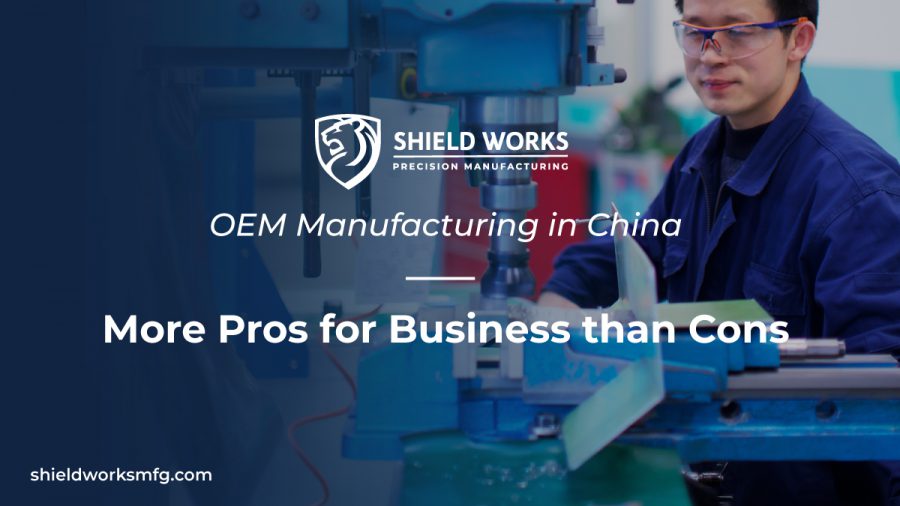
For many years, China has been the manufacturing hub of the world. Last year, this production rate shrank, partially due to the impact of COVID-19. This means that China needs your business and there has never been a better time to manufacture in the country. If not you don’t know how to benefit, then we can help. Read on as we discuss why you need to outsource OEM manufacturing to China.
Lower Costs
One of the more obvious and important benefits of OEM manufacturing in China is the reduction in cost. The bottom line is that the better your product and price, the more units you will sell. Even if you are putting out a high-end brand, then you can increase your profits by lowering manufacturing costs.
Domestic manufacturing sounds good in theory. However, it has increased overheads that do not exist in China. This makes locally produced products expensive and is why manufacturing in Western countries has declined in modern times.
Of course, you will have to pay to ship the products and pay import tax. But even if the overall price works out fractionally less, you are still saving. Over time and in increased volumes, you can expect this to be a substantial amount added to your balance books.
Warranty
When OEM manufacturing in China, many manufacturers will offer you a warranty for a given period of time. This can set your mind at rest when ordering products from across the world. If a product has issues, then you can ask for a replacement or ask for a solution to the problem.
Quick Output and Turnaround
China creates goods for companies all around the world. This means they have scaled up their manufacturing to unprecedented levels. If you need a large number of goods in a short time, they will deliver them.
These factories will have produced similar items to yours before. That means they have all of the procedures in place to get things manufactured quickly and on time.
One of the arguments against this is the unfair conditions of Chinese workers. However, if you research the plant you are using you will be able to find out if workers are paid a fair amount and treated fairly. You should also take into account that the attitude to work in China is culturally different from that in the West.
Excellent Service
Manufacturing in China brings with it the exceptional service inherent in their culture. Even for smaller businesses, you will get the same treatment as a larger, global operation would.
This service also carries through to product support. When you contact an OEM manufacturer’s support team, you will get to talk with their engineers. Speaking to their technical team cuts out the middlemen, meaning you can make informed decisions and get great advice on how to improve and refine your product.
Duplication
By no means do you need to counterfeit a product. However, when manufacturing in China you can specify things you like about one item and have them replicated.
Perhaps you want to include a feature you have seen on someone else’s products or use the same dimensions. By discussing this in advance, Chinese manufacturing companies will be able to arrange this for you easily.
This is how a product evolves. By taking something great and improving, you have the opportunity to make it even better. With each iteration of the item, you can expect the quality to improve as well.
Lead Time Reduction
When you outsource OEM manufacturing to China, you have a number of options to help you reduce lead times. One way is to use automation software to manage your inventory. This will ensure you stay on top of how much stock is needed, ordering at the precise time as you begin to run low.
The other option is to order regularly and consistently. This will mean a reduction in delivery and you won’t miss out when orders run low.
Expansion and Diversification
Outsourcing allows you to add new product lines and verification to your portfolio. This has been something you have been thinking of for a while but did not think possible with your current manufacturers. All of this can be done while keeping prices low and with better production.
This can also help you engage more international markets. You can ship to areas all over the world, allowing you access to markets not possible in the past.
Low Labour Costs
Another of the main benefits of OEM manufacturing is that you gain access to all the best that the company has to offer, including their labor. This means you get expertise without having to search, recruit and train your workers. Not only are labor costs lower in China, but you will not have to pay many of the expenses related to hiring local workers.
Scam Prevention
If you deal directly with overseas manufacturers, scamming is a possibility. You may find deposits or whole budgets go missing. In addition, even delivered products could be below standard if you have never dealt with the company before.
That means it is important to get a reputable company to arrange this for you. They will have trusted manufacturers who work to the highest standards. In addition, they will have agents who can traverse language and cultural barriers for you.
OEM Manufacturing
Now you know the benefits of OEM manufacturing in China, speak with an expert. They will be able to work out the best way for you to benefit. You may be able to improve profit more than you think.
Your first stop should be Shield Works. We are a British company working in Southern China for OEM manufacturing needs. Contact us here and see what we can do for your business.
What Are the Benefits of Using an Original Equipment Manufacturer?
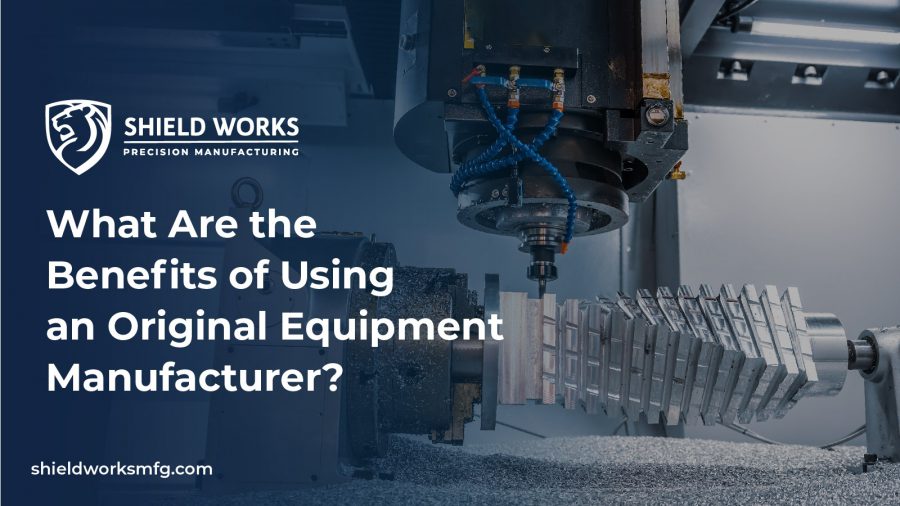
The presence of critical spares in your business is essential, but sometimes you encounter unexpected breakdowns. You’re caught in between making a hurried order from the original equipment manufacturer (OEM) or outsource from local suppliers.
With minimal repair time, most businesses prefer the latter, not knowing its financial implications. But before you make this critical choice, here are the benefits of using original equipment manufacturer parts in your business.
What Is OEM?
An Original Equipment Manufacturer also referred to as OEM, manufactures products and sells them to different companies. The purchasing company will then brand the product before selling it to its customers as a finished item. OEMs are common in the IT and auto manufacturing industries.
OEMs can be best described as business-to-business entities because they only deal with value-added resellers. The primary goal of the OEMs is to manufacture product components according to customization requirements.
Top Benefits of Using an Original Equipment Manufacturer
As a busy tech, health, or auto company, you’ve limited time to produce high-volume goods.
Thus, outsourcing the products from the original equipment manufacturer becomes cheaper and convenient. You also get high-quality and authentic products that fit your products.
Here are the benefits of using OEM:
Guaranteed Quality Parts
OEM products are pure quality, and their precision is top-notch. When you make an order from an original equipment manufacturer, you’re confident of getting the exact parts.
Using the original component blueprint and design template, OEMs craft accurate products.
You don’t need to describe the materials used because they know what to use at every stage of the parts manufacturing. Whether you’re in the robotics, medical, or health industry, you’ll get the exact product you’re looking for.
Using precision machining ensures that all products meet hyper-specific requirements.
Before dispatch, the manufacturers test the parts to ensure they meet the original specification. You get compatible parts that match the factory specs.
Manufacturer’s Warranty
What happens when a spare part breaks down a few days from its date of purchase? Buying from an OEM saves you from component defects and losses when the device cannot perform.
If the parts don’t work, they’ll replace the elements or repair them for free.
With a manufacturer’s warranty, the equipment lifespan is enhanced. Also, it reduces your downtime, saves money, and maintains its peak performance in the long run.
Should you experience part defects, call, and the manufacturer will resolve the problem.
Value
Your product value is what maintains your customer base and attracts more prospects. Stocking generic spares in your business can affect the product value.
The OEM in-house upgrades, engineering, optimization, and modifications maintain the component value. It’ll serve you past a specific duration and will be resilient between maintenance schedules.
With enhanced lifespan and minimal repairs, buying from an OEM gives you great returns on investment. It’s worth the wait and money spent on every component bought from these manufacturers.
Components Availability
Unlike generic suppliers who take time to imitate the original products, OEM requires less time to avail the required product. To beat downtime, most OEMs stock essential machine components ready for dispatch in case of a breakdown.
OEMs ensure that operations resume fast after unplanned shutdown by holding stock on consignment. They maintain catalogues of critical components and make them available.
Excellent Customer Service
Virtual description of different spare parts to an engineer can lead to wrong interpretation and production of a faulty part. When you partner with an OEM, you get a fast response to all your inquiries from designated engineers.
The professionals understand the parts and know how the blueprint and design work.
If the equipment is faulty and may not need a replacement, the engineers will virtually guide you through troubleshooting it. The exciting part is; you get to work with engineers that designed the components.
Also, they’re conversant with every aspect, making it easy for you to get the right answers to every of your question. The OEMs become silent partners whom you can trust with different component issues whenever there’s a complication.
Competent Prices
Dealing with OEMs opens up your business to competent product prices. Since the manufacturers will create bulk goods for your supply business, you can utilize the economies of scale.
At the start of the component production, the OEM will check and develop parts that match the budget. Though aftermarket items are cheaper, you can still match the price when buying from an OEM in bulk.
Yet, you’ll have better quality and customized parts, helping you save more.
Fast Production
What happens to old machine parts whose production ceased and the availability in the market is scarce? The availability of blueprints and raw materials simplifies the OEM production process.
No matter how old the vehicle or medical equipment is, the manufacturer has everything it takes to produce the required part. Upon request, the manufacturer will start production, ensuring that it meets factory specs.
Durability
Products obtained from an OEM are 100% percent durable. You don’t have to worry about the materials or the product strength in challenging conditions because it’s made with precision.
The manufacturers understand how component quality matters to consume and cannot compromise it.
OEM knows the duration that each component takes before wearing out. With an idea of when the changeout is due, you can plan on the new replacement.
Choosing an Original Equipment Manufacturer
Choosing an ideal manufacturing partner is overwhelming for the first time. Below is a list of things to look at before contracting an OEM:
• Expertise and capabilities
• Track record
• Quality
• Pricing
• Communication
• Licensing
• Flexibility
Entrusting your blueprints to a manufacturer requires trust and the ability to build a long-term relationship. Checking on the above facts before hiring one will safeguard your products and ensure your expectations are met.
Get a Reliable Original Equipment Manufacturer Near Me
It’s no secret that dealing with an original equipment manufacturer has many benefits to your business. Besides an impressive return on investment, you get quality products and a warranty for every product you buy.
Are you a startup and need a reliable OEM for your IT, electronics, medical, or food industry? At Shield Works Precision Manufacturing, we provide diverse manufacturing services. For more information about our services, get in touch with us today.
A Complete Guide to Original Equipment Manufacturing (OEM)
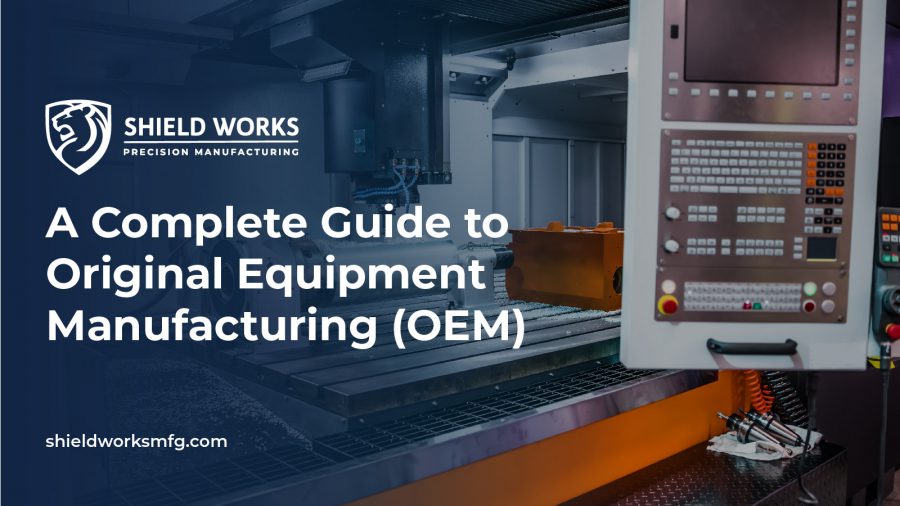
Manufacturing is a vital part of the U.S. economy. It accounts for more than 11 percent of total output and about 8.5 percent of total jobs.
This also means remaining competitive can be a challenge. Doing so entails producing superior products for your customers.
If you are new to manufacturing or looking for new opportunities for production, assembly, or warehousing, consider original equipment manufacturing (OEM). This alternative can make all the difference in the price you are paying for parts and the quality of the end-product you are offering.
There are many advantages to choosing the OEM option. This original equipment manufacturing guide will give you an idea of what these production methods entail. It also will offer some insights into how your business could benefit from them.
What Is Original Equipment Manufacturing (OEM)?
Original equipment manufacturing (OEM) means that a company makes components for other businesses. These value-added resellers (VAR) then sell the end-product under its own brand.
OEM companies market to other manufacturing retailers, while VARs focus on sales to the public. The computer, electronic, and automotive industries are the most common types of businesses that use OEM.
For example, a computer company will not manufacture all the components in the machine. An OEM will make the processor, disc drive, or other hardware, then the company assembles and sells the completed computer. Similar arrangements are found in automobile manufacturing.
OEMs are distinct from aftermarket parts manufacturers. These companies make parts that look and function like original components. They are generally less expensive, although that is not always the case.
Examples of aftermarket parts include fenders, rims, or cargo racks for vehicles. These are less common in computer manufacturing but are prevalent in the manufacture of a variety of electronic products.
Most aftermarket parts do not function with the same reliability as OEMs. There are exceptions, but it depends on the product. For instance, people might buy tire rims that drive better than generic ones that come with their vehicle.
What are the Advantages of OEMs?
There are many advantages an original equipment manufacturing company can provide. Here are a few significant ones to consider.
Quality
The most obvious advantage of OEMs is that they function as intended. Unlike aftermarket parts, OEM components fill an original, specific function. This means that in most cases, they are more reliable and durable.
A reputable OEM company will have some type of guarantee for the parts they are producing. Warranties differ by company, but you can expect to get the components they promise and that they will perform as intended.
Customization
Another advantage of OEMs is customization. If you are ordering these parts for a specific purpose, you will be starting from scratch with the production company. They will design a process for producing the part with precision.
Besides basic parts production, OEM companies will often offer extra assembly options. They are more likely than other manufacturers to work with you on getting the final combination of components that best suits your production demands.
Support
You can expect a more personal and interactive customer relationship with OEM companies. This is because, from the outset, you must be in conversation with them about components and their function. They are more likely to be in tune with how to meet your product and assembly needs.
OEM companies will send you samples and adjust specifications based on your recommendations. Likewise, they can adjust the production process where necessary. This is something you will not get from many aftermarket manufacturers.
Cost
Aftermarket parts can be cheaper for consumers looking for a quick replacement. But this is not always the case for VARs with larger manufacturing needs. In fact, due to economy-of-scale, OEM companies can keep production costs low and pass those savings along to their clients.
Once OEMs have design and manufacturing processes in place, production is cost-effective. Depending on the size of your order, this is likely to mean cheaper costs to you, especially in the long term.
Planning
OEM companies can estimate the cost of production with precision. This will allow you to budget long-term. It also allows you to eliminate the guesswork of what parts may cost––and how quickly you can get them–months down the road.
This also means you can return to that OEM at a later date and expect to receive the same part. This can translate to huge efficiencies for your business. Since you will not be starting from scratch, you can fill new orders quicker without having to worry about accessing the parts you need to do so.
Warehousing Capabilities
Warehousing is a big part of manufacturing. Another benefit of going with an OEM company is their ability to assist in this endeavor. OEM companies are more likely to offer a variety of third-party logistics (3PL) services, such as repackaging and labeling.
Warehousing is another add-on service that OEM companies are more likely to offer than aftermarket parts businesses. It can be a huge asset for larger orders and shipping efficiency.
Warehousing provides you with greater flexibility for inventory management as well. Prominent OEM companies are likely to offer cloud-based management services. Such programs can make it easier for you to manage your parts on-hand and get them where they need to go.
This can translate to serious cost savings for your business. It helps you manage larger orders and do direct shipping to customers. It also may allow you to reach a broader market base.
Find Original Equipment Manufacturing Near Me
Now that you have an idea of some original equipment manufacturing tips and what OEM entails, you can decide if it is right for your business. Find a reputable company that can meet your specific production needs and provides value-added services that can help you provide a better product and manage delivery processes.
At Shield Works Precision Manufacturing, we provide original equipment manufacturing (OEM) production, assembly, and warehousing solutions to our international clients. We offer quality custom manufacturing at globally competitive speeds and prices. Reach out to us today for a free quote and consultation.
How to Find an OEM Manufacturer for Your Products
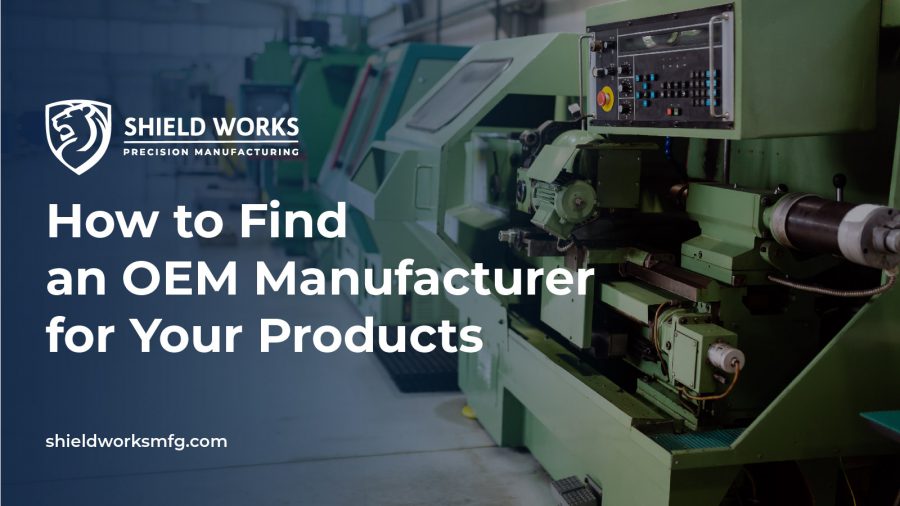
China’s factories ran at record-high levels in the second quarter of 2021. High demand for Chinese exports in places like the US and Europe fueled this production.
Would you like to take advantage of the benefits a Chinese OEM manufacturer can bring your business, but you’re not sure where to start? Are you wondering how to choose an OEM manufacturer?
Learn more here about how to find the right OEM manufacturer for your products.
Why Use an OEM Manufacturer?
Many companies don’t have the resources for high-volume manufacturing or highly specialized products. You can outsource manufacturing to reduce costs and avoid the complexities of keeping production in-house.
An Original Equipment Manufacturer (OEM) makes the components for your product. You provide the design specifications for anything the OEM produces. You receive the parts and assemble them into the finished product with your trademark.
An OEM with experience making products similar to yours knows the product assembly process. They already have a supply chain in place. You can put this experience to work for you.
Domestic or Overseas Production?
Before you start looking for the right OEM manufacturer, you need to decide if you want to use a factory in the US or overseas. The best solution for your product manufacturing depends on your business priorities.
Pros and Cons of Domestic Manufacturing
Domestic manufacturing has some advantages. Using a factory in the US can give you more direct control over production. You can visit the site more regularly. You avoid dealing with tariffs and international shipping logistics.
American factories usually let you order small batches of a product. Overseas factories often have large minimum orders.
The main disadvantage of using an American factory is that you’ll almost always pay more. In addition, you may not be able to find a domestic manufacturer for some types of products.
Pros and Cons of Overseas Manufacturing
Using a factory overseas has several benefits. A factory in a country like China will almost always be cheaper than a factory in the US.
You have more options. The vast number of companies that have outsourced their manufacturing to China means that you’ll usually be able to find several sites with experience making your type of product.
Possible challenges include longer shipping times and handling import/export regulations. You’ll also need to navigate differences in business cultures. However, you can address many of the issues surrounding overseas production when you start vetting potential manufacturers.
Start Looking for a Chinese Manufacturing Plant
You can get suggestions for Chinese manufacturers you may want to use from many sources. Your industry trade association can give you potential names. The small business network for your industry is another resource.
You can also get recommendations from business contacts and networking groups.
International trade shows in the US that attract Chinese manufacturers are a good starting point as well. You can meet manufacturers and make connections with exhibitors selling products similar to yours.
Online directories of overseas manufacturers are a good resource. These sites include:
- Alibaba
- Global Sources
- Global Sourcing Specialists
- Kompass
- MFG
- ThomasNet
Searching by industry or product category can help you find manufacturers with expertise in your area.
Narrow Down Your Choices
You can use several factors to narrow down your list of potential manufacturing partners. One of the most important considerations is to find a factory that makes products similar to yours. Some manufacturers will offer to make anything, but the quality will likely be lower.
Look for online ratings and reviews to see what other buyers say about the manufacturer.
Finally, look for manufacturers that primarily export to the US and other western countries. These manufacturers already have experience complying with the necessary quality standards, product safety standards, labeling regulations, and packaging requirements. They’re more likely to have the international shipping logistics you need.
You can also look for a Wholly Foreign Owned Enterprise (WFOE). A WFOE manufacturer has its production facilities in China. However, the company has non-Chinese ownership and management.
Depending on its ownership, a WFOE will give you the quality and service western businesses expect.
Protect Your Intellectual Property
Protecting your intellectual property (IP) is critically important as you begin the process of outsourcing your manufacturing. Copyrights, trademarks, and patents are some tools you can use. Be sure your legal protections are designed for international situations.
A non-disclosure agreement (NDA) is a legally binding contract. It helps protect you against other companies copying your product. Before you start getting quotes from potential manufacturers, they should sign an NDA.
Questions to Ask a Potential OEM Manufacturer
Once you’ve narrowed down your list, it’s time to start asking some detailed questions. Ask about the labor practices of any factory you’re considering. Be sure to verify this information the best you can. Unsafe working conditions or abnormally low compensation for workers are at minimum a PR risk for you.
Ask to see a business license and documentation of the quality control system. Recent proof of inspections or third-party audits is also important. A reputable company will give you this information.
Other questions to ask include:
- What is your experience making this type of product?
- Who are some of your current clients?
- Do you do all the work in-house or subcontract to other factories?
- What is the minimum order size?
- How long will it take to make my order?
- What is the price for samples?
- What is the price for production?
- What are the payment terms?
With this information, you can choose two or three finalists and ask them to make a sample of your product. Comparing the results will show you which Chinese manufacturing plant you should use.
Choose Your OEM Manufacturer
The process for finding and evaluating an OEM manufacturer in China can seem overwhelming. Thorough research will help you find the best factory for your products.
Avoid the hassle and choose Shield Works for your product manufacturing. We’re a 100% British-owned WFOE. You get benefits like full IP protection, a live video stream from your manufacturing zone, and ISO standard quality control.
We also offer warehousing and logistics. Contact us today to find out how we can be your outsourcing solution.
Look to the East – How China Manufacturing Facilities Provide an Edge
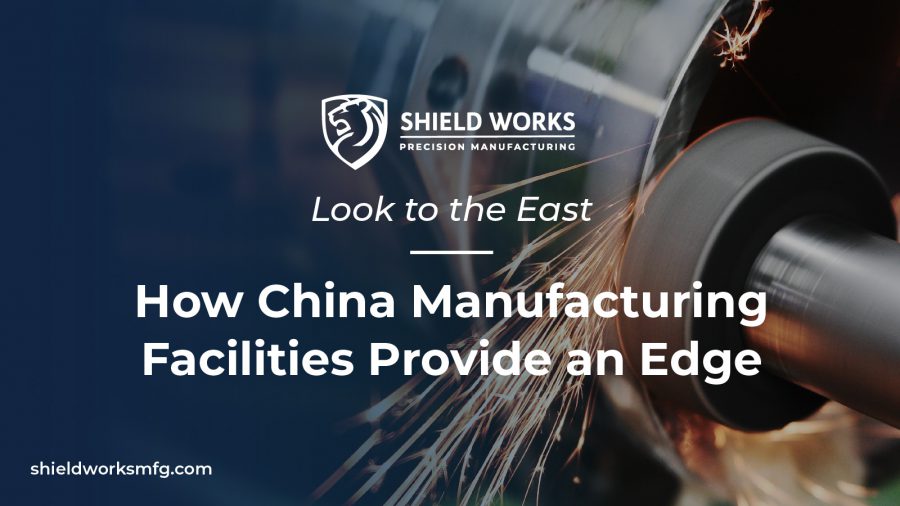
Choosing the right manufacturer for your business will play a significant role and how much revenue you are able to generate. For this reason, most entrepreneurs tend to work with a Chinese manufacturing plant.
However, not everybody understands the benefits that they can experience from doing so. Let’s explore the key details you need to know about China manufacturing.
Lower Overall Costs
As you might assume, one of the primary benefits of outsourcing your manufacturing to China is the lower labor costs.
This is simply due to the fact that Chinese facilities have much less overhead to work with. Additionally, they also have fewer training costs. When manufacturing domestically, facilities need to allocate a significant amount of money to cover these expenses.
This leads to businesses of all types outsourcing instead. Of course, wages in China are also lower than those in the United States.
This allows each dollar you spend to go much further when outsourcing. Keep this in mind when moving forward so that you can take advantage of the utility Chinese product assembly can provide.
Larger Production Volume
Not every business needs to manufacture thousands of products within a single order. However, large organizations often find it difficult to find a domestic facility that can satisfy their needs.
Chinese factories produce goods for a substantial number of countries on Earth. This means that China has typically created facilities that are capable of high-volume production. In fact, even the average Chinese factory could drastically outperform most facilities within the United States.
For companies that need a massive supply of their product, there is simply no better alternative than outsourcing to China. In many cases, doing so is also the only way to hit your target metrics.
Diversification
Part of long-term success involves scaling your business.
This can occur in a multitude of different ways. For instance, you might introduce a new product line to customers in order to generate additional revenue.
Or, you may break into growing markets in order to establish a niche. Regardless of how you do so, Chinese manufacturers can help you diversify your business opportunities. Creating new products, in particular, is one of the primary ways in which they can help.
In some circumstances, choosing a Chinese OEM manufacturing plant could be what helps you set yourself apart from your competition.
Quick Changes to Product Design
Domestic facilities can’t always accommodate design changes. More specifically, it may take them days or weeks in order to implement your new ideas.
As you can tell, this can easily cause issues with your sales numbers. Your current product might not be something your customers would be satisfied with. Delayed orders due to design changes also carry the risk of having your audience turn to competitors instead.
Chinese facilities are always ready to implement required changes. In fact, all you need to do is get in touch with a representative from your manufacturer and convey what you need.
More often than not, the facility will begin manufacturing the revised products immediately. This is a crucial factor to consider, as it can often mean the difference between whether or not you maintain your brand reputation.
Intellectual Property Protection
Interestingly, many people are unaware of the fact that many Chinese factories prioritize intellectual property protection.
This means that they painstakingly work to avoid any sort of infringement that could land you in legal trouble. For example, let’s assume that you sell a product that is highly similar to that of a competitor.
A reputable manufacturing facility in China will go out of its way to ensure that no copying or reverse engineering has occurred. As with any other manufacturing industry, there are shady facilities that employ the above tactics.
The good news is that you can research the reputation of your prospective factory to ensure that you avoid working with ones that use underhanded tactics. Otherwise, you may find yourself in a situation that is difficult to overcome.
Overall Efficiency
Not only are Chinese factories capable of mass production, but they can also do so at a notable rate.
These facilities have the newest and most efficient equipment that makes them capable of meeting virtually any production standard. This also allows smaller organizations to compete with larger ones.
Under many circumstances, small companies simply can’t keep up with the rate at which larger companies produce goods. Without the right manufacturer on your side, there’s a strong chance you can’t remain competitive.
How Can I Find The Factory Right for Me?
It can seem overwhelming to find a Chinese manufacturer. Not only are there time zone complications, but the language barriers in place often deter entrepreneurs from doing so. Working with a professional will help get you in touch with the facility that is ideal for your business.
These individuals will serve as the liaison between you and the other party. So, they will handle nuances making agreements, conveying production needs, etc.
You can check out this resource to learn more about how you can benefit from doing so.
China Manufacturing Can Be Game-Changing
So, be sure that you keep the above information in mind when determining whether or not this decision is right for you. From here, you’ll be able to leverage China manufacturing if it’s appropriate for your business.
Want to learn more about what we have to offer? Feel free to get in touch with us today and see how we can help.
5 Benefits of Using OEM Manufacturing You Need to Know
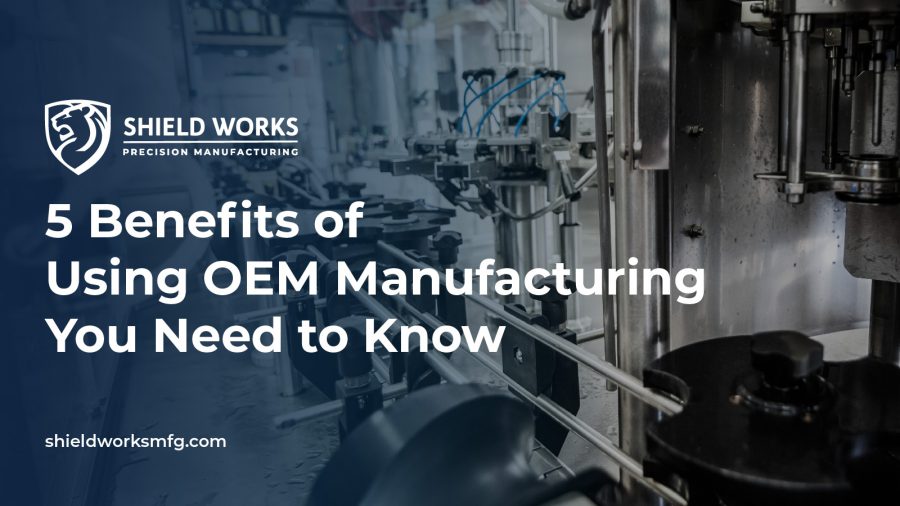
Are you looking for manufacturing services but aren’t sure where to turn? Electronics companies and more usually outsource their manufacturing to expert facilities that engineer their products with precision. In a computer or smartphone, every component has to be carefully constructed to create a positive end user experience. There isn’t much room for error. Because of this, brands often turn to OEM manufacturing to create their components to get the best possible quality and safety for their products.
OEMs, or original equipment manufacturers, don’t just work in the electronics industry, however. Besides OEM phone manufacturers and PC manufacturers, you can find companies producing all kinds of consumer products. Practically any business can utilize OEM manufacturing and enjoy its many benefits in their field.
Best of all, when you turn to OEM for your manufacturing needs, you get the same quality and reliability that top brands rely on.
Some businesses turn to other types of manufacturing: aftermarket manufacturers or value-added resellers. These alternatives work well in the industries where they excel. But nothing compares to the precision and service offered by top OEM manufacturers, whether your company produces business electronics or consumer products.
If you want to better understand the benefits of using OEM, then you’ve come to the right place. Keep reading for the top five benefits of OEM manufacturing.
1. Reliable Quality
Earlier, we mentioned aftermarket manufacturers and value-added resellers as being alternatives to OEM. But neither option provides the same level of customizability or support that OEM offers.
Aftermarket manufacturers make parts that are meant to imitate OEM-manufactured components. This often comes at a cost, as aftermarket parts are often low-quality compared to OEM parts. Aftermarket manufacturers are also limited in the level of customization they can provide to their customers.
Value-added resellers take OEM parts from other manufacturers and enhance them. They do this by adding new features and capabilities with additional components.
While VARs fill an important role in the market, they’re limited by the availability of OEM parts. VARs don’t create entirely new components from scratch, which can hold some businesses back.
As their name implies, original equipment manufacturers specialize in manufacturing brand-new parts based on original designs. This means they’re capable of building necessary components from scratch. It also makes OEM manufacturers well equipped to provide remarkable levels of customization to their customers.
OEM companies work directly with their customers. Because of this, they’re better prepared to produce products that perform exactly as their customers need them to. This often leads to sturdier, longer-lasting parts than aftermarket manufacturers can provide.
Best of all, the best OEM manufacturers are constantly working to improve the quality of their products.
2. Competitive Pricing
One of the highlights of OEM manufacturers in the competitive prices they offer. Despite providing excellent support and service, manufacturing parts with an OEM is well within the budgets of most businesses.
While aftermarket parts are sometimes cheaper, their low prices often come at the cost of both quality and customization. And when you buy OEM parts in bulk, you can save even more. You may even match the prices of top aftermarket manufacturers.
3. Faster Production
You probably wouldn’t expect the production of physical parts to happen very quickly, but with an OEM, production times can be short. OEM manufacturers try to keep designs on hand for as many parts as possible, including older parts no longer in production. This means they can often find blueprints for needed parts immediately and start production right away.
What about when existing designs for necessary components aren’t available? OEMs offer quick turnaround, even when working with original designs from their customers.
OEM companies know they exist within a highly competitive market. They’re careful to make sure their customers are satisfied with their services.
4. Excellent Support
OEM manufacturers work directly with their customers. When you contact your manufacturer, you have the opportunity to speak with an engineer responsible for your product. This means OEM customers have a wide range of technical and engineering support.
OEMs work closely with their customers to ensure each component works exactly as intended. Precise manufacturing is key, so manufacturers go above and beyond to meet customer demands.
Not only that, but OEM companies often offer excellent warranties on their products. If you should ever get a part with any defects, your manufacturer should make it right.
5. Return on Investment
The most important part of any business endeavor is getting a return on your investment. Original equipment manufacturers make it easier for businesses to turn a profit with their products.
OEM parts are specifically designed from the ground up to fit their applications. This means the functionality and lifespan of OEM products are usually excellent. As a result, businesses working with an OEM can expect to save money and reduce downtime in the long run.
Most importantly, your own customers will be far more likely to have a good experience with your products.
Get Started With OEM Manufacturing From Shield Works
And there you have it: the top five benefits of OEM manufacturing, from quality to ROI. As you can see, a business can’t go wrong when choosing to work with any OEM manufacturer.
Not all OEMs are created equal, however. That’s why you should seek out the best, whether you need OEM barrel manufacturing or are looking for a great OEM PC manufacturer.
Whatever your OEM needs, Shield Works has your business covered with some of the best features and services in the industry. Contact us today, and let’s start taking your business to the next level.
OEM vs. ODM: Selecting Your Manufacturer in China
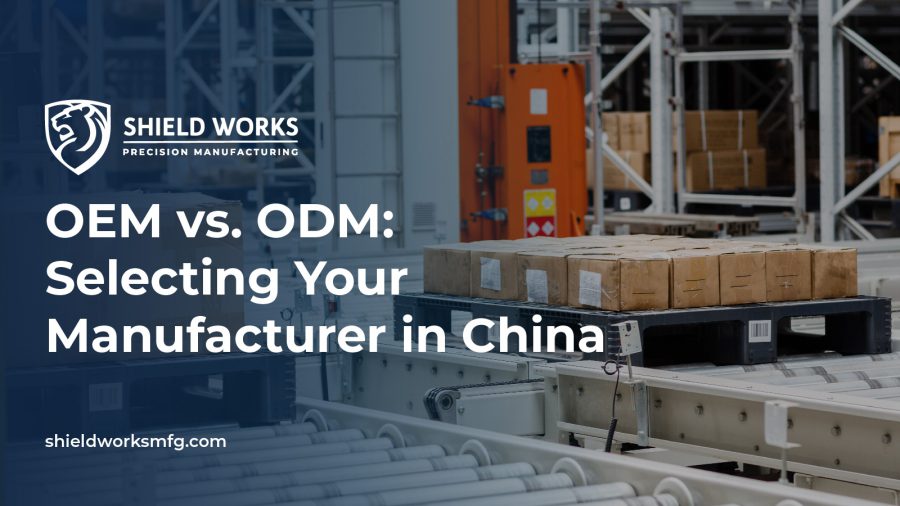
If you have decided to outsource production to China, you must find a reliable contract manufacturer to partner up with. They can make or break your business. During your search, you’ll come across the terms OEM and ODM. You must understand these unique business services before contacting a manufacturer. In this post, we evaluate OEM vs. ODM manufacturing to help you choose the right producer to meet your needs.
OEM vs. ODM Meaning: What is OEM Manufacturing?
The abbreviation OEM stands for Original Equipment Manufacturer. It means that the production factory manufactures products as per the design specifications provided by the original company. An OEM firm plays a purely manufacturing role in the supply chain, allowing both companies to benefit from their strengths.
In many cases, a firm doesn’t have the resources needed to produce high-volume or highly-specialized goods. Outsourcing production to an OEM company cuts down on costs.
The client usually commissions the supplier to manufacture parts, components, and subsystems according to their specifications. Once the components are delivered to the client, they go through assembly. The client affixes the finished product with the company trademark, and sells it on the market under their name, and at competitive prices.
Common product categories that benefit from OEM production include the automotive industry, electronics, ICT equipment, plastic parts, cosmetics, toys, and garments.
Advantages of OEM
Some of the benefits of OEM vs. ODM manufacturing include:
Cost-Effective Products
The cost of producing components is highly competitive due to the economies of scale. Streamlined processes, large volumes, and efficient supply chains in countries like China make OEM components quite cheap. This translates to higher profit margins, increased sales, and more revenue.
Specialized Technology
Don’t have the right equipment or expertise to create certain components? Take advantage of the specialized technology offered by OEM manufacturers to get it done. This access to better technology and expertise leads to quality products.
Intellectual Property Rights
OEM gives you complete control over the trademarks and intellectual property rights. This allows you a better bargaining position, which makes it easier if you ever need to switch suppliers.
Disadvantages of OEM vs. ODM Manufacturing
The main disadvantage is that there is a limited selection of OEM suppliers for specialized items. This doesn’t allow you a good opportunity to capitalize quickly on innovative or new products. Requesting product samples can help circumvent this issue.
Many OEM suppliers prefer dealing with companies that can create a lot of demand. As such, this may not be your ideal route if you can’t sell goods fast.
There is also the risk of infringement of your intellectual property rights. The designs you create for components could be sold to competitors.
You cannot rely on OEM suppliers to troubleshoot or correct any faulty designs as they manufacture products based solely on the data you provide.
OEM vs. ODM Meaning: What is ODM Manufacturing?
The abbreviation stands for Original Design Manufacturer and refers to companies that design and manufacture products. The products are then sold to other companies, which rebrand and market them as their own.
ODM manufacturers produce goods in bulk. This allows smaller companies to benefit from the expertise of the manufacturing firm and economies of scale.
ODM companies are categorized under White Label & Private Label Production. White label suppliers distribute generic finished products to different retailers who sell them as their own. Private labeling firms sell finished products exclusively to a particular retailer.
Product categories that benefit heavily from ODM manufacturing include cosmetics, food, electronic cigarettes, consumer electronics, medicine, and clothing. Many supermarkets with their range of basic items share the same ODM supplier.
Advantages of ODM Manufacturing
Top benefits of manufacturing ODM vs OEM you should consider include:
Speeds Things Up
ODM companies don’t have to worry about researching, developing, and testing a product. They already did that a long time. All they have to worry about is rebranding an already made product to be uniquely linked to your firm.
Cheaper than Manufacturing Your Products
Designing and testing the effectiveness of a product requires capital and time. Partnering with an ODM manufacturer saves that much more money and allows you time to focus on the core aspects of your business.
Reliable and Tested Products
Depending on how complicated a product is, certification is required before it goes to market. ODM manufacturers handle all the quality inspections and testing and obtain product certifications long before you place your order.
Disadvantages of ODM Manufacturing
Working with an ODM manufacturer makes it difficult to stand out from the competition. The same product you purchase will be sold to other companies, with minimal variations. Unless you get creative with marketing or are a well-known brand, your product will get lost in the crowd.
If you do manage to kill it in sales and customers request an upgrade, convincing your ODM supplier to help you will be tough. Many ODMs aren’t quick to develop new products, especially if it calls for a partial or full redesign.
The intellectual rights belong to your supplier. As such, you’ll never have complete control over any legal decisions regarding the product, or who else the supplier sells to.
ODM vs OEM Manufacturing: What’s Right for Me?
The main difference between OEM vs. ODM lies in the approach to product development. This poses obvious implications for you as an importer in terms of lead time, IP ownership, and costs. Let’s take a closer look at a comparison between the two:
- There is no difference in price per unit
- Product development takes 1-8 months in OEM and 1-4 weeks in ODM
- Injection molds and tooling is paid for by OEM buyers and ODM supplier
- Both offer mass production
- The buyer provides the product design in OEM while ODM manufacturers handle product design
- OEM buyers and ODM suppliers own the intellectual property rights
Whether working with an ODM or an OEM works for you depends on your product, market, and goals.
OEM vs. ODM: Contact Shield Works to Learn More
Whatever your business model, outsourcing production can improve the efficiency of your supply chain and spark business growth.
Shield Works provides reliable precision assembly services that you can rely on for increased output and enjoy the benefits of product assembly in China. Contact us today to learn more about OEM vs. ODM manufacturing.
The Ultimate Guide to Original Equipment Manufacturing (OEM)
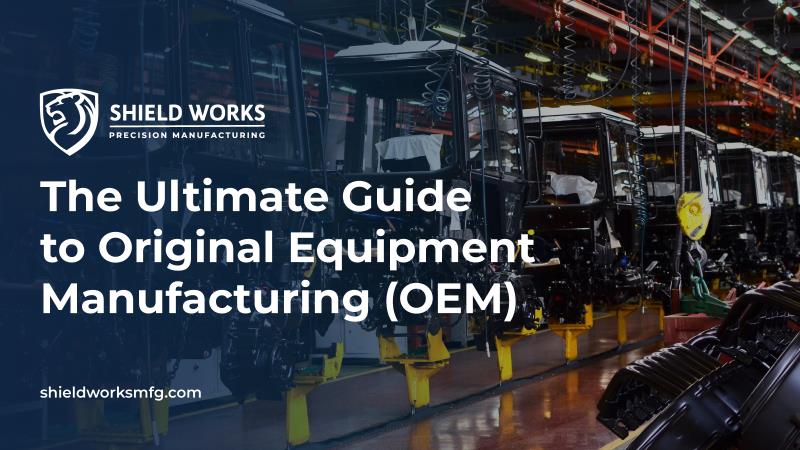
If you work in an industry that deals with physical devices, you understand how each part needs to function properly for the product to be a success. The average vehicle, for instance, has about 30,000 parts, and each one is important for the car to work. That is why knowing how each component is produced is vital to the overall quality of the machine. If you are unfamiliar with original equipment manufacturing (OEM) and its many benefits, keep reading.
The information below will explain the distinctions between OEMs and their alternatives. It will give you a sense of how your business will profit from these components and why you should find reputable manufacturers to work with.
What Is OEM Manufacturing?
Original equipment manufacturing (OEM) refers to the production and sale of products directly to customers. This means that the components of a product are manufactured for that machine and its uses. The automotive and electronics industries are some common industries where you will find OEM parts.
There is a distinction between OEMs and ODMs, which are original design manufacturers. ODMs created the design and specifications of a product. OEMs, by comparison, do not have to be the original designers but must be licensed to produce them using the original specifications.
OEM Alternatives
Aftermarket manufacturers make parts that are meant to look and function like OEM parts. They are often cheaper, although there are some deficits, including diminished quality, that come with the lower price tag.
There are exceptions to this. Some aftermarket parts can enhance performance. These are most common in the automotive industry. A good example is custom vehicle floor mats or upgraded stereo equipment.
It is worth noting that these are more the exception than the rule. And, even with these products, it is difficult to be certain of the heightened quality and performance.
There is a third option: value-added resellers (VAR). These are businesses that use OEM parts but incorporate different features and functions.
VARs and OEM parts manufacturers have a mutually beneficial relationship. VARs help sell OEM parts, and OEM manufacturers supply the parts for upgrade.
OEM Manufacturing Benefits
There are many advantages to purchasing OEM parts. Here are a few major ones to consider.
Better Quality
OEM companies work directly with customers. This means they are better situated to produce a product that performs the way you need it to. OEM manufacturers are much more likely to be able to customize parts for you.
OEM manufacturers make parts for their intended uses. So, you can expect them to function better and last longer than aftermarket ones. For this reason, you will find more comprehensive warranties with OEM parts.
OEMs will have higher quality standards than aftermarket companies. That is because they know that cheaper alternatives are available.
Since OEM companies are not trying to “fill a gap,” they are always improving the quality of their products. This means that the parts you buy from them tomorrow will be better than the ones they made today. This evolution in quality is not always present in aftermarket companies.
Competitive Cost
While aftermarket parts are often touted as cheaper alternatives, many OEM manufacturers can provide better pricing, especially with bulk orders. That is due to economy-of-scale production that is not achievable by aftermarket companies.
While aftermarket parts can be cheaper, you may be “rolling the dice” when it comes to value. With OEM parts, you can be more assured that you are getting what you pay for.
Also, the longer lifespan of OEM parts can more than offset any cost savings from cheaper parts that break down more often. Depending on your industry, this also can translate to thousands of dollars in savings due to avoided downtime.
You may find higher installation costs associated with aftermarket parts as well. Since they are not made to original specifications, there is no guarantee that you can incorporate them with the same ease as OEM parts.
Quicker Production
Faster turn-around is one of the biggest advantages of using OEM. That is because you are buying directly from the manufacturer and cutting out the “middle man.” An aftermarket company will take longer to identify the part and ensure they have it in stock.
OEM companies are more likely to have older parts as well. It is common for OEMs to have a more expansive storage capacity than smaller manufacturers.
Aftermarket companies often produce components to fill a need for a limited time. But OEM manufacturers are better situated to retain designs and production methods for older products. This can be a huge advantage if you need specific components that are otherwise no longer available.
Better Support Services
You can expect OEM companies to provide superior engineering and technical support. They will have unique knowledge about their products. That is because they are involved in everything from design to production and testing.
OEM companies can only exist if they are meeting the needs of their clients. They understand that alternatives are available and will do everything in their power to provide a quality product that works as intended.
Establishing a relationship with an OEM company will guarantee that, should products not meet your expectations, they will do everything they can to make it right. This can afford peace of mind that is not achievable with alternative product manufacturers.
Find Original Equipment Manufacturing Parts for Your Business
Now that you have an idea of what original equipment manufacturing entails and what the benefits are, you can decide on products that meet your manufacturing needs. Be sure to find a reputable manufacturer that can meet your product demands and offer superior support and customer service.
Shield Works provides customized OEM manufacturing, assembly, and warehousing solutions to clients around the world. We pride ourselves on open communication and services so that you will receive prompt communications and short lead times for product customization. Reach out today to learn more about our products and services.


